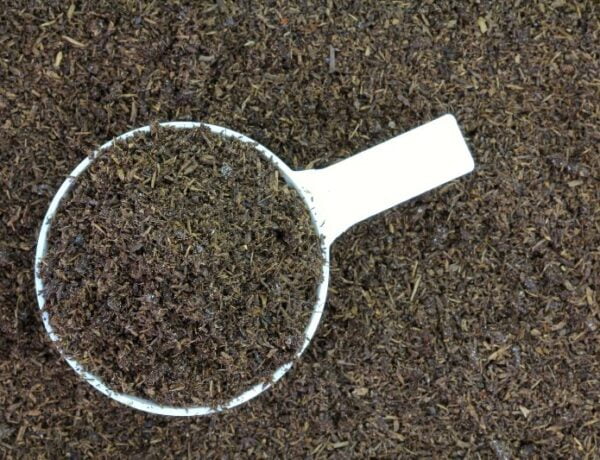Cacti are hardy, resilient plants known for their ability to thrive in the harsh conditions of desert environments. Despite their toughness, they can still be susceptible to various issues that may cause them to fall over or experience poor health.
Factors such as pests, diseases, and improper care can weaken a cactus, making it more prone to toppling or suffering from other issues. Ensuring proper care, including appropriate watering, light, and air circulation, as well as regular inspection for pests or diseases, is key for maintaining the health and stability of your cactus.
By paying close attention to your cactus’s needs and addressing potential issues as soon as you notice them, you can ensure it remains a vibrant and stable addition to your home or garden for years to come.
Table of Contents
Main Causes of Cacti Falling Over
1. Insufficient Light
Insufficient lighting can cause a cactus to exhibit phototropism, a phenomenon where plants grow towards the source of light. When a cactus doesn’t receive enough light, it will try to optimize its light exposure by leaning towards the light source.
This can also lead to several other issues:
- Etiolation: Insufficient lighting can cause a cactus to become etiolated, meaning it grows abnormally tall and thin with a weak stem. The plant puts more energy into vertical growth in an attempt to reach more light, at the expense of its overall health and structural integrity.
- Imbalanced growth: As the cactus leans towards the light source, it may develop an uneven distribution of weight. This can make the plant more prone to toppling over, particularly if it’s already top-heavy or has an unstable growth pattern.
- Pale coloration: Inadequate light can lead to a loss of the cactus’s natural coloration, causing it to appear pale or discolored. This is a sign of stress and can further weaken the plant.
- Reduced flowering: Insufficient light can also negatively impact the plant’s ability to produce flowers or fruit, as the energy it would use for these processes is redirected towards growth in search of more light.
2. Overwatering
Overwatering is actually one of the most common reasons for cacti falling over. As desert plants, cacti are adapted to survive in environments with limited water. Overwatering can lead to several problems:
- Root rot: Excess water in the soil can create an anaerobic environment around the roots, promoting the growth of harmful fungi and bacteria that cause root rot. This condition weakens the root system, compromising the plant’s ability to absorb nutrients and support its weight, making it more likely to fall over.
- Softening and discoloration: Overwatered cacti may become soft and discolored, as their cells take up too much water and become damaged. This can weaken the plant’s structure, increasing the risk of it falling over.
- Edema: Overwatering can also cause edema, a condition where the plant’s cells take in too much water and rupture. This can result in blistering or corky, brown spots on the surface of the cactus, further weakening its structural integrity.
3. Underwatering & Dehydration
Underwatering can also contribute to a cactus falling over or experiencing poor health, although cacti are generally more tolerant of drought conditions than other plants. The impact of underwatering on a cactus can manifest in several ways:
- Shriveled or wilted appearance: Insufficient water intake can cause a cactus to appear shriveled, wilted, or deflated, as its cells lose water and turgor (what makes plant tissue rigid) pressure decreases. This can weaken the plant’s structure and, in severe cases, make it more prone to falling over.
- Weak root system: Underwatering can lead to a weak or underdeveloped root system. A healthy root system is essential for a cactus to anchor itself in the soil and support its weight.
- Slow growth or dormancy: A lack of water can cause the growth of a cactus to slow down or even stop altogether, as the plant goes into dormancy to conserve resources. This can result in a weak or underdeveloped plant that may be more susceptible to falling over or other stressors.
4. The size of Its Container
The size of the container in which a cactus is potted can have a significant impact on its stability. Both overly large and overly small pots can contribute to issues that may lead to the cactus falling over or experiencing other problems:
Too large container
A pot that is too large for the cactus can result in several issues:
- Excess soil: Larger pots contain more soil, which takes longer to dry out after watering. This can lead to overwatering and root rot, which weakens the plant’s ability to support its weight and increases the risk of it falling over.
- Slower root development: In an oversized pot, a cactus may prioritize root growth to fill the available space before developing its above-ground structure. This can slow the overall growth of the plant and make it more susceptible to pests and diseases.
Too Small container:
A pot that is too small for the cactus can also cause problems:
- Rootbound: A cactus in an undersized pot may become rootbound, meaning its roots are tightly packed and have little room to grow. This can hinder the plant’s ability to absorb water and nutrients, leading to stunted growth and a weakened structure that may be more prone to falling over.
- Insufficient nutrients: In a small pot, the available nutrients in the soil can be quickly depleted, resulting in nutrient deficiencies that can weaken the plant.
- Unstable base: A small pot may not provide a stable base for a top-heavy cactus, increasing the likelihood of it toppling over.
5. Pests and Diseases
Pests and diseases can weaken a cactus, increasing the risk of it falling over. Common pests include mealybugs, scale insects, and spider mites, while fungal and bacterial diseases can cause rot and decay.
How to Fix a Fallen or Leaning Cactus
1. Assess the Damage
If your cactus has fallen over, first assess the damage to determine the best course of action. If the roots are intact and the plant appears otherwise healthy, you can attempt to repot and stabilize the cactus.
2. Repotting and Supporting Your Cactus
To repot your cactus, carefully remove it from the pot and inspect the roots. Trim any damaged or rotting roots before placing the cactus in a new pot with fresh, well-draining soil. Position the cactus in the pot so that it is straight and stable, then add support, such as a stake, if necessary.
3. Monitor and Adjust Care
After addressing the issue of your cactus falling over or leaning, monitor its progress and adjust its care as needed. Ensure it receives adequate light, avoid overwatering, and maintain proper soil conditions. Be patient, as it may take some time for your cactus to fully recover and regain its strength.
Preventing Future Issues
To prevent future problems with your cactus leaning or falling over, follow these tips:
- Monitor your watering schedule to prevent overwatering, taking into account the specific needs of your cactus species and environmental factors.
- Fertilize your cactus with a balanced, slow-release fertilizer formulated for cacti and succulents during the growing season to promote strong, healthy growth.
- Regularly check the stability of your cactus in its pot, and consider repotting in a larger, more stable pot as the plant grows.
Conclusion
Cactus falling over can be a frustrating issue, but with proper care and attention, you can address the problem and prevent it from happening in the future.
By understanding the causes of a leaning or fallen cactus, such as insufficient light, overwatering, poor soil, unstable pots, or pests and diseases, you can take the necessary steps to correct these issues and provide your cactus with the care it needs to thrive.
Remember, patience and consistency are key when it comes to caring for your cactus, and with time, your efforts will be rewarded with a healthy, beautiful plant.





No Comments